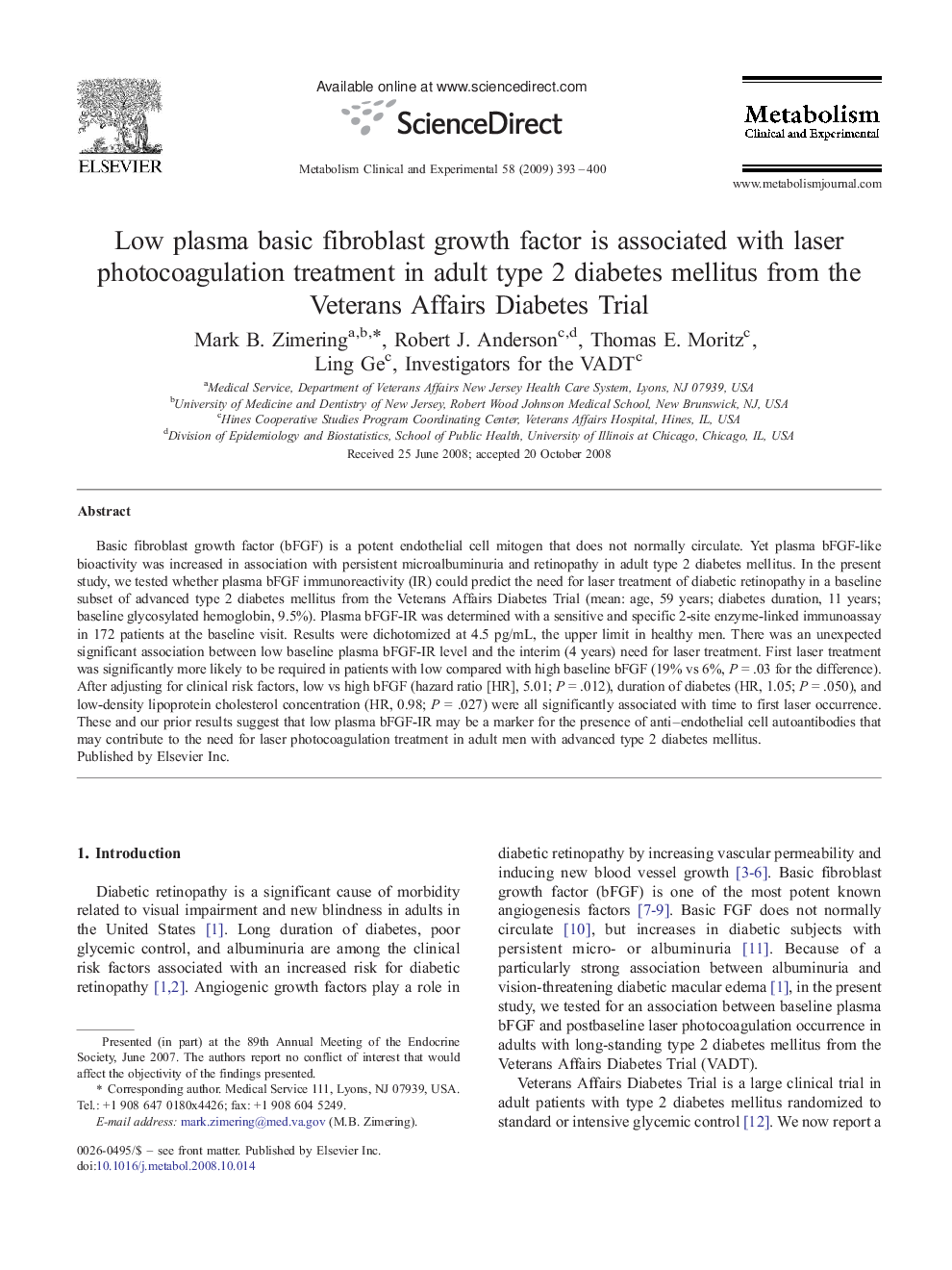| Article ID | Journal | Published Year | Pages | File Type |
|---|---|---|---|---|
| 2807364 | Metabolism | 2009 | 8 Pages |
Abstract
Basic fibroblast growth factor (bFGF) is a potent endothelial cell mitogen that does not normally circulate. Yet plasma bFGF-like bioactivity was increased in association with persistent microalbuminuria and retinopathy in adult type 2 diabetes mellitus. In the present study, we tested whether plasma bFGF immunoreactivity (IR) could predict the need for laser treatment of diabetic retinopathy in a baseline subset of advanced type 2 diabetes mellitus from the Veterans Affairs Diabetes Trial (mean: age, 59 years; diabetes duration, 11 years; baseline glycosylated hemoglobin, 9.5%). Plasma bFGF-IR was determined with a sensitive and specific 2-site enzyme-linked immunoassay in 172 patients at the baseline visit. Results were dichotomized at 4.5 pg/mL, the upper limit in healthy men. There was an unexpected significant association between low baseline plasma bFGF-IR level and the interim (4 years) need for laser treatment. First laser treatment was significantly more likely to be required in patients with low compared with high baseline bFGF (19% vs 6%, P = .03 for the difference). After adjusting for clinical risk factors, low vs high bFGF (hazard ratio [HR], 5.01; P = .012), duration of diabetes (HR, 1.05; P = .050), and low-density lipoprotein cholesterol concentration (HR, 0.98; P = .027) were all significantly associated with time to first laser occurrence. These and our prior results suggest that low plasma bFGF-IR may be a marker for the presence of anti-endothelial cell autoantibodies that may contribute to the need for laser photocoagulation treatment in adult men with advanced type 2 diabetes mellitus.
Related Topics
Life Sciences
Biochemistry, Genetics and Molecular Biology
Endocrinology
Authors
Mark B. Zimering, Robert J. Anderson, Thomas E. Moritz, Ling Ge, Investigators for the VADT Investigators for the VADT,
